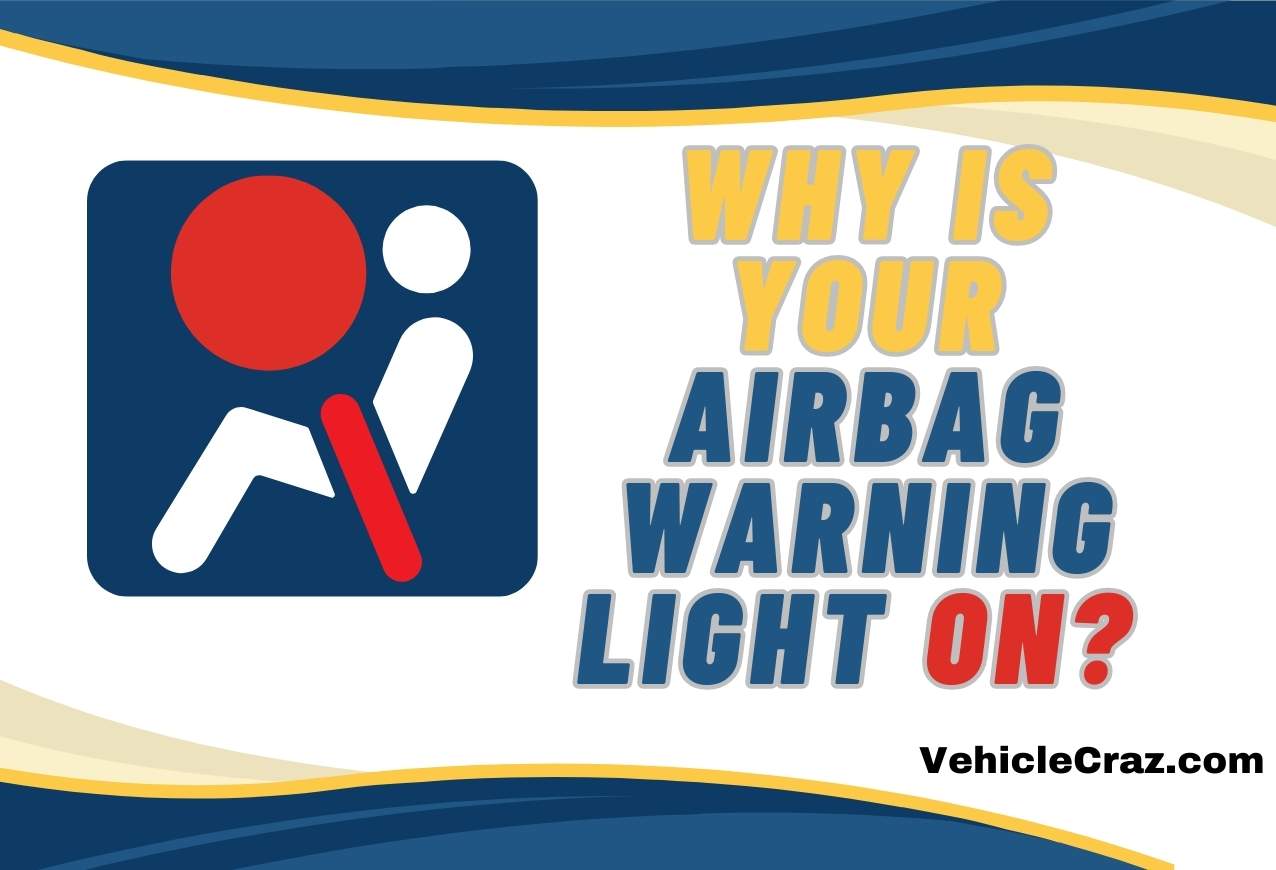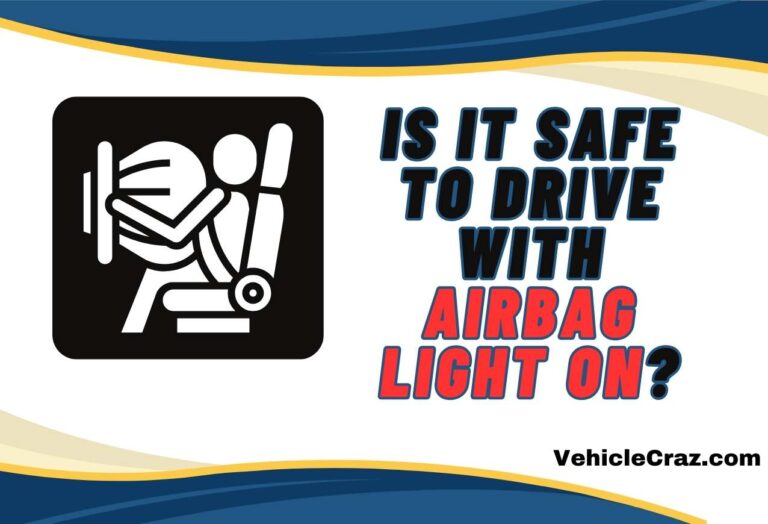Why Is Your Airbag Warning Light On?
Airbags are a critical component of a vehicle, and it’s natural for drivers to feel panicked when they see the airbag warning light on the dashboard. If you notice the airbag light and wonder why it is on, we are here to explain everything, drawing from our extensive experience. Let’s begin!
Why is My Airbag Warning Light on?
Although there are many reasons, the most common cause of an illuminated airbag warning light is typically related to issues with the car’s electrical system, specifically faulty or malfunctioning sensors and wiring or connection problems. Let us explain everything in detail.
Faulty Sensors
The airbag system includes a bunch of sensors; some of them are impact sensors, seat occupancy sensors, and weight sensors. These airbag sensors are critical for determining when to deploy the airbags when an accident happens.
If any of these sensors are faulty, improperly installed, or have been deactivated, the system will trigger the airbag warning light. We’ve seen in many instances where, commonly, frontal impact sensors might get damaged in minor accidents or due to wear and tear, leading to false readings.
Airbag Module Issues
We would say the airbag’s control module is the system’s brain, which processes sensor data and deploys airbags when necessary. Issues can arise due to water damage, circuitry problems, or software glitches.
Even after a minor accident, the module might store crash data and turn the airbag light on until it’s cleared or replaced.
Wiring Problems
Over time, the vehicle’s wiring can degrade or become loose. The airbag system consists of a complex network of wires and connectors. If any are damaged or disconnected, it can disrupt the system’s operation.
If you are dealing with an old vehicle, this can be a major issue if you see the warning light for the airbag. More or less, it’s the same with the cars that have undergone significant repairs or modifications.
Clock Spring Wear and Tear
The clock spring is a coil under the steering wheel that maintains an electrical connection to the airbag. It allows the steering wheel to turn while keeping the airbag connected to the car’s power supply.
Wear, tear, or corrosion in the clock spring can break the circuit, causing the airbag light to illuminate.
Passenger Seat Recognition Issues
Many vehicles have advanced systems that detect the presence and weight of a passenger to help determine successful airbag deployment in an accident situation.
If the system malfunctions, perhaps due to spills, object interference, or sensor failure, it might incorrectly signal an issue, prompting the warning light.
Battery Voltage Fluctuations
The airbag system requires a stable power supply to function correctly. If the car battery is failing or there are significant voltage fluctuations, it can trigger the airbag light.
This might happen during battery replacement, jump-starting the car, or when the battery is near the end of its life.
What to do If the Airbag Light Comes on?
The first thing we recommend you do if the airbag light comes on is to avoid tampering with the system yourself; airbag diagnostics and repairs require specialized knowledge and tools. Instead, schedule a visit to a certified mechanic or dealership.
They can perform a thorough diagnostic using advanced tools to interpret the car’s diagnostic codes and pinpoint the issue. Professionals will check for the troubleshooting steps we explained like checking for faulty sensors, such as impact or occupancy sensors, or addressing wiring and connection problems.
Is it Safe to Drive With the Airbag Light on?
We do not recommend driving with the airbag light on, as it indicates a potential malfunction in the vehicle’s safety system. This airbag warning light is an alert to one or more components of the airbag system.
We say this because in the event of an accident, the airbags may not deploy as intended, or they might deploy unexpectedly, posing a significant risk to vehicle occupants. So, without taking undue risk, it is your responsibility to take immediate action.
How Much Does it Cost to Replace an Airbag Sensor?
The cost to fix an airbag sensor varies, typically ranging from $200 to $400. This price depends on the vehicle’s make and model, and the specific sensor type (such as impact or occupancy sensors). In addition, the labor cost to replace an airbag sensor would be around $60-$75. Replacement parts and the complexity of the diagnostic process can also influence the total expense.
How Much Does it Cost to Replace Clock Spring?
Clock springs are an expensive component and the cost to replace a clock spring in a vehicle typically ranges between $400 and $500 including the labor cost. However, when replacing the clock springs the mechanic might have to replace some other related parts as well thus adding a few more bucks.


I’m Alex, a seasoned mechanical teacher with over 20 years of hands-on experience in Australia. My passion for all things automotive has driven me to establish this blog, aiming to share my wealth of knowledge and expertise with fellow enthusiasts, DIYers, and anyone keen on understanding the mechanics behind the machines we rely on daily.




![Water Leaks into the Vehicle Through the Windshield? [Solved]](https://vehiclecraz.com/wp-content/uploads/2024/09/Planet-Arcadia-13-768x526.jpg)


